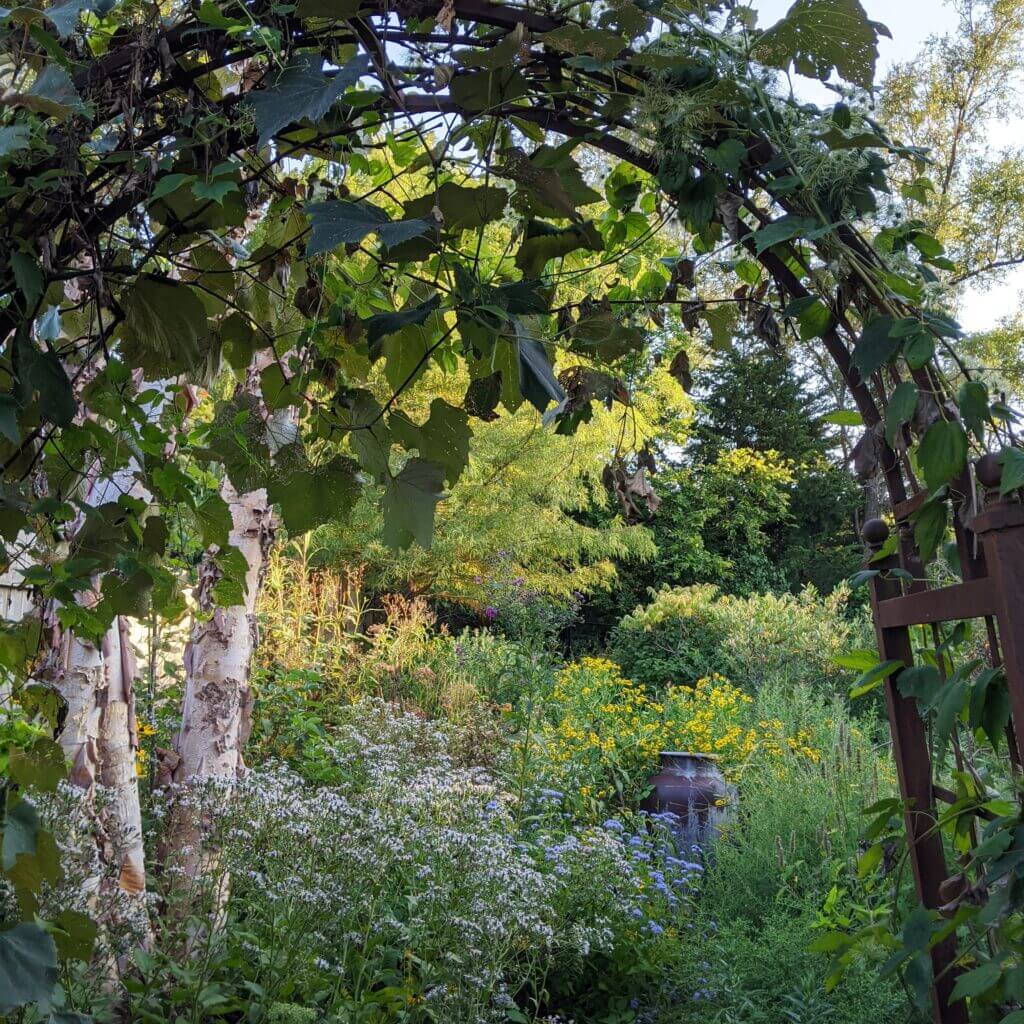Once you have researched matrix design it’s time to take it a step further by considering how the natural garden will bridge the gap and evoke some traditional conceptions of gardens to help people read, process, experience, enjoy, and accept the radical unlawning you’ve undertaken. Thinking about the design aspects of a natural, native plant garden will not diminish the ecosystem services of the landscape, but instead will enhance the power and potential for the garden to be an agent of helpful change for the entire community.
Especially if your landscape is easily accessible or seen — so think front yards — it’s important to use shorter species. What this means is using very little that folks can’t see through or over, which can otherwise feel intimidating; also, our animal brains like to see potential threats coming from further away to prepare to fight or flee (we did evolve on grasslands), so shorter plants aid in this situational awareness.
Try to keep the majority of species in the neighborhood of 18-30 inches tall — and we’re talking herbaceous perennials, grass, and sedge. Obviously, most woody trees and shrubs will be much taller. When plants are consistently low this provides an easier landscape to read and approach, and the best place to do this is in the matrix or living green mulch or groundcover layer. All those matrix plants of grass or sedge will already be about 12-24 inches tall, and there will be a lot of them, so you’re ahead of the game.
Seasonal flowers will emerge from this matrix in masses and drifts, while architectural perennials will reach a bit higher — and the more open and airy those taller species the better (so think Eryngium and Liatris). This level of control, focused on mature height, in no way limits the ecosystem function, plant diversity, or wildlife support, but it does show the space has intention and purpose. Anything you can do to show subtle control and planning when you have anything but a lawn is critically important in natural design.
All that being said, there are also some traditional design strategies we can employ that are useful in natural design, such as taller plants in the back of a border or the middle of a bed, with shorter plants in the front and toward the edges.
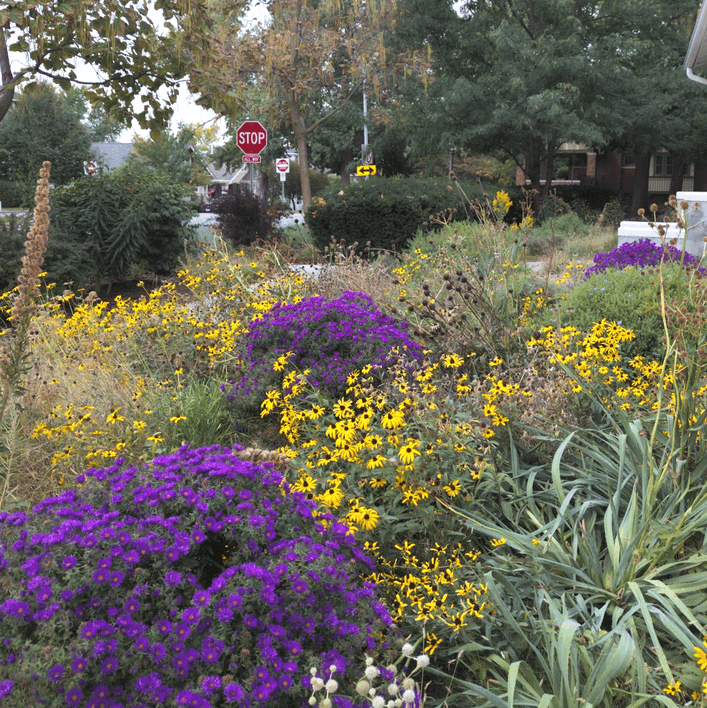
The season flower layer will be, for all intents and purposes, the showiest layer for most walking by. Because, yes, flowers tend to be bright and obvious and seen as intentional and welcoming — that’s how the plants and pollinators generally like it. Massing and drifting is another technique that helps a landscape show purpose and planning.
What this design method means is you are literally massing and drifting single plant species, and repeating those groupings across the landscape. So, you might have 5 Echinacea planted 12 inches apart and repeat that mass 5 or 7 or 15 times across the landscape depending on scale. You might have a weaving, organic drift of 15 or 30 Allium moving through the grass matrix.
One aspect of this approach that we need to be aware of is that not all species can be forced into this technique. For example, around here Asclepias tuberosa does not grow in masses in the wild but as singles or pairs randomly spaced in a prairie or meadow; if you try to put them in masses of 5 or such, it’s likely only one or two will survive. Species that put out heavy seed and lightly colonize are good candidates for massing, again like Echinacea, or those that spread slowly by rhizomes. It’s certainly important to match sociability to the site conditions and the larger plant community in order to maintain design cohesion and reduce management angst.
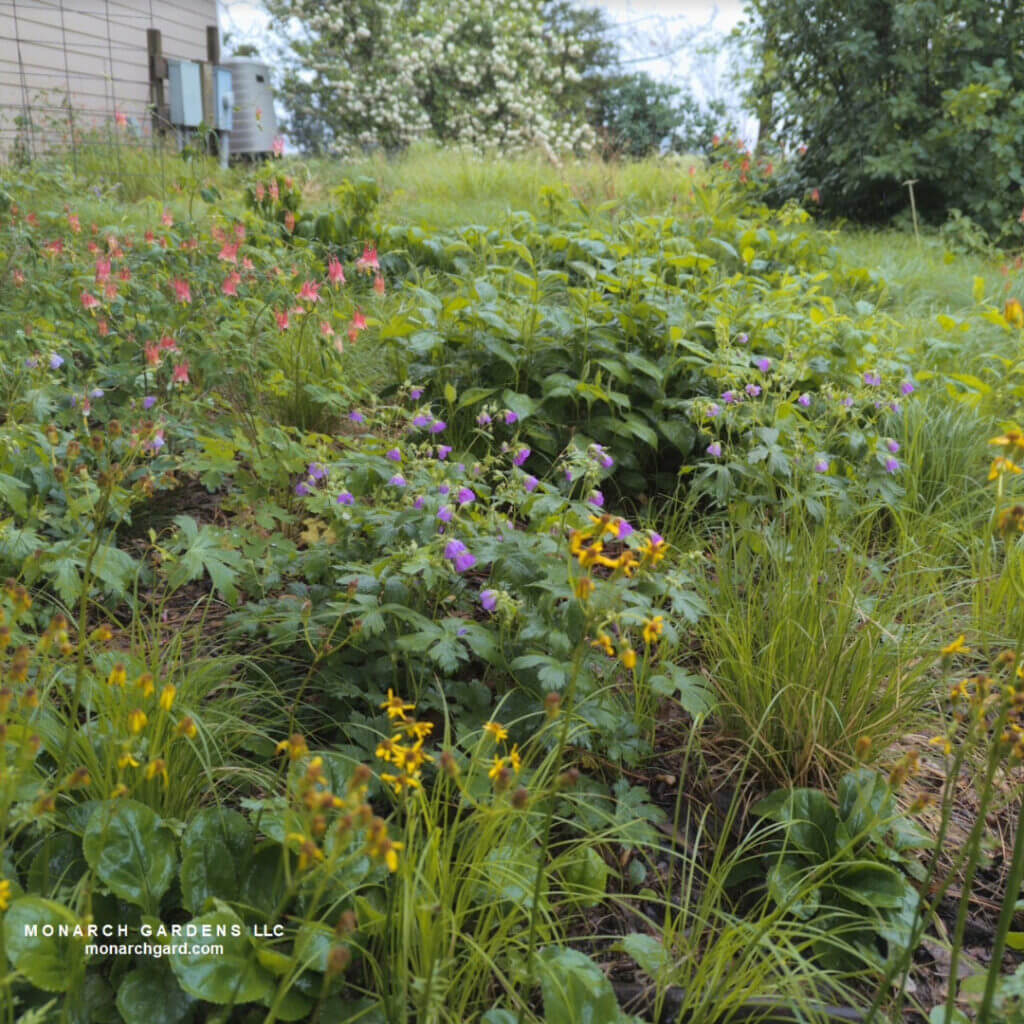
The smaller your landscape or planting bed, the less sociable the plant species you’re using should be. Now, we won’t find sociability rankings on any plant tag, book, or website like we find most other information, but this critical information we need to have when researching and selecting plants — and that’s why we have guides and classes on the topic to help you learn how to collate and gather this information from multiple sources.
Basically, plant sociability rankings are all about gauging plant behavior in general on a scale of 1-4 (low spread to high spread), as well as site conditions that affect that behavior like dry soil, clay soil, lots of plant competition, and more. For example, Conoclinium coelestinum loves to colonize by roots in rich, moist loamy soil in part shade, but in sun or in clay soil with healthy plant competition, it’s more of a natural filler that provides blooms in the critical summer/ fall shoulder season.
If you have a smaller bed you’d want to choose species that don’t seed easier or run much by roots. If you have a large site and need lots of free plants for budgetary reasons, or are trying win out against invasive exotic plant species or slow erosion, you’ll likely choose a mix of low and high sociability plants — likely skewing toward the latter. Gauging a plant’s performance through research and before we dig it in the ground will save us lots of management headaches down the road, as well as reduce the occurrences of feeling like we have brown thumbs.
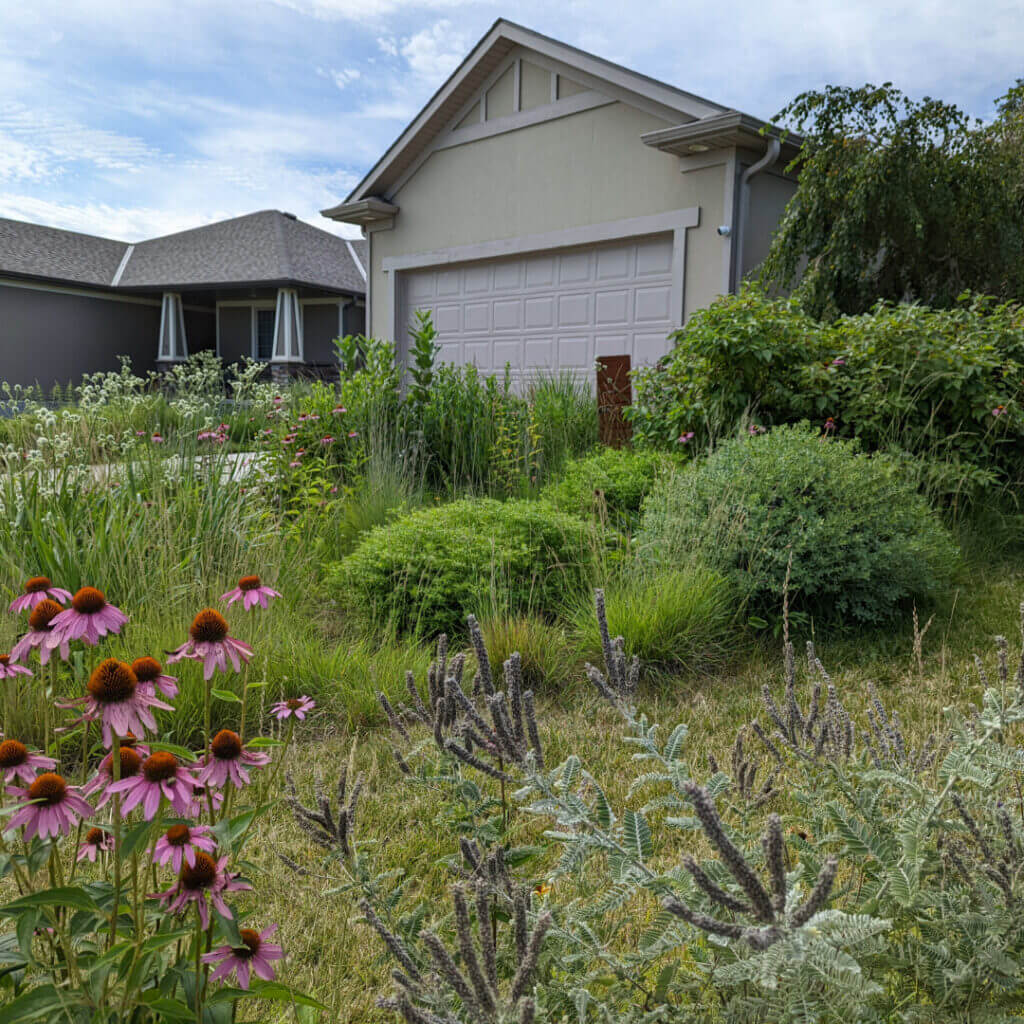
Flowers show intention. It’s a fact. But too many flowers show unfettered chaos, like someone barfed up a bag of seed and had no plan, just lots of vague hope.
For showier forb (flower) species, you won’t need as many individual specimens as you will for less showy species. Again, one Asclepias tuberosa goes a long way given the bright orange, whereas something that blooms violet or light blue might benefit from more massing if the species naturally grows in that way. Making sure you have something in bloom at all times from spring through fall shows intention, provides beauty for us, and provides continual resources for adult pollinators.
Finally, don’t have 10 species in bloom at once unless it’s a larger landscape. In a typical urban or suburban lot it’s best to stick to 1-3 different species that bloom concurrently, otherwise it looks like a Victorian garden mess (at least to many other humans, and particularly in lawn-dominant areas). So, again, do your research and due diligence, the most critical aspect of successful natural garden design.
The wonderful aspect to all of this talk about showing intention through plant selection and placement, and in particular using matrix design, is that the fall and winter garden design takes care of itself. The structure, texture, and color (yes, brown is a color, too) will all be baked in — winter interest, habitat, and continued ecosystem function will all exist through stems, leaves, seed heads, and even cues to care.
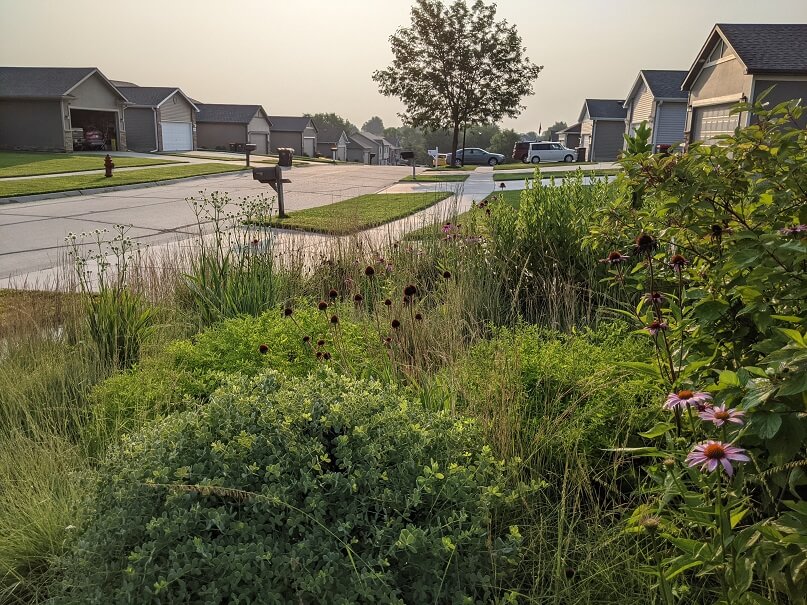
This is the simplest and easiest aspect of natural garden design when we want to show intention and be welcoming to our neighbors. Cues to care are the structural and guiding bones of the landscape, part of the non-plant design.
For example, a pathway (the wider the better) of mowed lawn, wood mulch, gravel, stone, or lava. Well, not lava. Metal or stone edging would be a cure to care — even fences and stone or timber walls. Benches. Tables. Sitting areas. Arbors. Fountains. Sculptures. These aspects of design show human use and intention, welcoming folks into the space in yet another way.
Finally, we once had a weed control superintendent say that anytime they saw a sign describing the purpose of the landscape, the county rarely if ever got a report from a neighbor. That helps. So does not using high-sociability or tall, flopping species in a small space.
Oh let’s talk about tall, floppy plants before we end. Why do some species flop? The biggest culprit is that there’s not enough root competition from other plants. Think about it. In the wild, plants struggle with one another for resources, but when you use the same species in a more spacious and relatively clear garden bed, the plant can stretch out with a sigh of relief. Stiff goldenrod, Oligoneuron rigidum, is a poster child for this occurrence.
